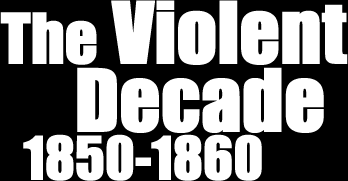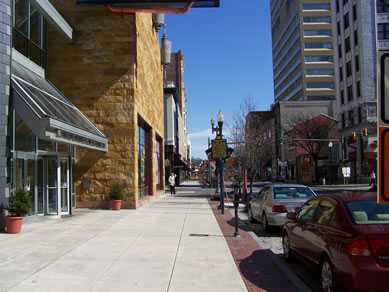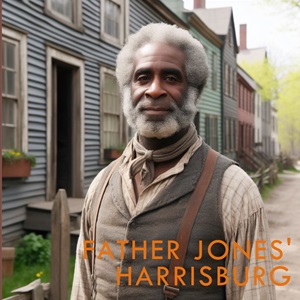

Study Areas
George and Jane Chester's Restaurant
Market Street, Harrisburg, PA
In the 1840s and early 1850s, this block held an oyster cellar run by African American businessman George Chester, which became a local abolitionist headquarters. Chester was a Maryland-born man who (according to him) was free, having served his time with a man named Thomas Collins. He came to Harrisburg before 1820 and lived with his wife and child in Dewberry Alley. He would later own a house on Market Street, just east of Dewberry.
The following is from The Year of Jubilee (2010), Volume One, page 394:
According to a description of the business and property published in William Henry Egle's Notes and Queries, the Chester's oyster house was located in a "long frame building which flanked the county property [the court house] on the east." The top floor of this building was used by printer and publisher George Bergner, and "several attorneys-at-law occupied rooms on the first floor." Chester's "famous oyster cellar" was in the basement and was reached by an outside entrance "around the corner" from the courthouse.
The construction of Brants' Hall on this site in 1854 is believed to have forced the relocation of Chester's Restaurant. After George Chester died in 1859, his second wife, Jane, purchased a home at 69 Chestnut Street and moved the restaurant there. It later relocated to 305 Chestnut Street. Neither of these later locations have been associated with abolitionist activity.
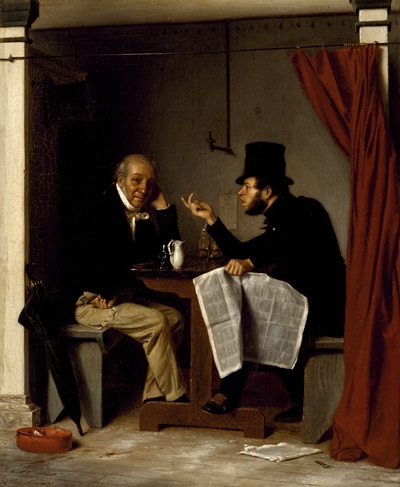
The image above is the painting "Politics in an Oyster House," by Richard Caton Woodville. Painted in 1848, about the time that Chester's oyster house was used as a gathering spot for Harrisburg's white and Black abolitionists, it shows what the interior of the restaurant possibly looked like. Note the curtained booths, common to these type of restaurants, that provided the privacy necessary for planning. Image from the collection of the Walters Art Museum, Baltimore.
During the Civil War, Chester's Restaurant was located in the basement of the Buehler House on Market Square (formerly the Eagle Hotel and later known as the Bolton Hotel). A July 1862 ad, reproduced below, notes that the restaurant served numerous local favorite foods and "all the delicacies of the season."
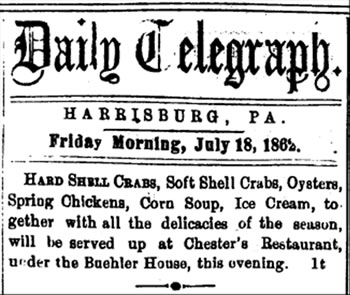
Later in the summer, Jane Chester added a local favorite, turtle soup, to her menu:
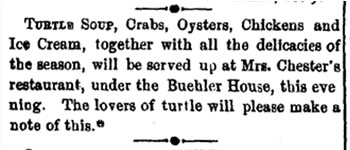
Further Research
Previous Next
![]()
![]()
All original photographs and text on this page copyright © 2010 George F. Nagle and Afrolumens Project.
Notes and Links
- Historical Marker Database page
- PHMC Marker (T. Morris Chester)
- More on Richard Caton Woodville's painting "Politics in an Oyster House," reproduced above as an illustration for this article.
Of Interest Nearby

